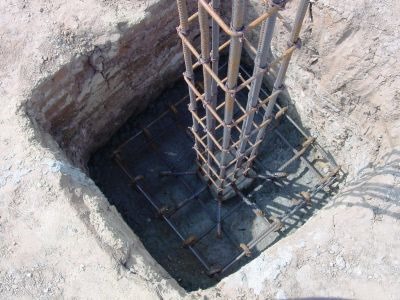Methods of Concreting of Columns, Pedestals and Footings
Proper concreting of reinforced concrete columns, pedestals and footings is needed to ensure desired strength and durability of these structural members.
Improper method of concreting may lead to corrosion of steel reinforcement due to pores, cracks in concrete and concrete may not achieve its target strength on setting. This may also lead to failure of columns, pedestals or footings on during occupancy of the structure.
Checklist for Concreting RCC Columns, Pedestals and Footings
Things to keep in mind before starting concrete works at site are:
- Formwork inspection for strength, leakage and surface finish.
- Reinforcement inspection as per drawing, lap length, correct lapping guidelines as per code.
- Inspection for concrete cover to reinforcement.
- Inspection for alignment of structural member as per drawing.
- Availability of sufficient construction material at site.
- Availability of concrete vibrators.
- Proper safety PPEs and safety measures
- Proper ratio of concrete mix should be confirmed.
- Availability of slump testing equipment.
- Availability of cube casting equipment.
After the above inspection is done and found satisfactory, concreting work should start.

Method of Concreting of Columns, Pedestals and Footings
Concreting of RCC columns, pedestals and footings should start from the center of vertical bars and go towards the ends. After placement of sufficient quantity, concrete should be vibrated at regular intervals so that the concrete spreads evenly on all sides.
Over vibration of concrete should be avoided. Over vibration of concrete leads to segregation of coarse aggregates which settles at the bottom making the mix weak.
Proper keys should be provided in the center of column reinforcement and walls. if the concreting has to be stopped for the day, all upper surfaces of column and walls should be made rough by wire brush after initial setting of concrete for joints with later pour of concrete.
This is required to provide a proper grip between concrete of stem part with footing and walls and foundations. Cement and sand slurry of 1:1 mix should be applied on the footing and foundations before column stem and wall concreting is started, to avoid separation of stem/ wall where a cold joint may be formed.
After the concreting of footing is complete, immediately in a day or two starters for column and wall should be casted with proper alignment and again the upper surface of starter should be made rough.
This can be easily achieved simply by spreading and light pressing coarse aggregates particles when concrete is still green in such a way that part of coarse aggregate is outside and part goes inside.
This method of making top surface rough is to be adopted along with providing key at all places in columns, pedestals, vertical walls which are always concreted after concreting of footing and rafts concreting is over (approximately two or three days later).
These measures provide a proper grip between the surfaces. In addition to above dowels in between outer main bars of wall and column are inserted when concrete is wet to provide further grip between old and new concrete surfaces.
These dowels are 600 to 800 mm cut pieces of reinforcement bars, which are inserted in green/wet concrete such a way that half length is projecting and half length is inside concrete.
No comments:
Post a Comment